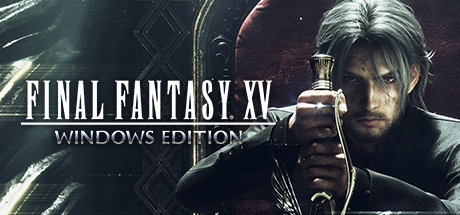
Final Fantasy XV: Windows Edition
There’s very little middle ground when a game is rescued from development hell – it’s either going to be a perfectionist masterpiece or a lumbering failure struggling under years of unfinished ideas. Final Fantasy XV is in the latter category. Its initial impression is overwhelming, as it drops dozens of mechanics into your lap right from the beginning, and that lack of discipline permeates the entire product. The combat, in particular, prioritizes spectacle at the cost of everything else. It’s nearly impossible to tell where you are and what you should be doing most of the time, because the screen is always covered by a minimum of sixteen flailing limbs and elaborate visual effects. The developers likely realized this, but rather than slowing the pace or scaling back the visual excess, they sacrificed player agency instead, eliminating nearly all sense of strategy or balance.
You can command your AI party members to perform a handful of special techniques, and you can teleport to far away targets, but these are merely punctuation. Most of the combat consists of holding one button to automatically attack and holding another to automatically dodge. Depending on your position, you may automatically attack in a special way. Sometimes an enemy will arbitrarily attack in such a way that it will be automatically blocked instead, which will allow for a quick-time event parry maneuver. Under this system, different weapon types feel nearly identical. The somewhat intricate spell-crafting system is only useful for developing all-purpose nukes, because it’s impossible to use magic strategically. And summon magic is just a universal one-hit kill that literally only works when the gods are in a good mood. There’s even a multilayered safety net that ensures the only way to actually lose is by forgetting to buy healing items. The result is gameplay that’s neither difficult nor easy – just irritating and apathetic.
A game can engage through spectacle, of course, and as much as FF15’s opulent visuals and animation directly and indirectly interfere with the quality of the gameplay, they are undeniably breathtaking. In fact, the gorgeous scenery may be the only thing worthwhile about the game’s open world, a structure whose purpose seems to have been fundamentally misunderstood. I usually refer to bad open world design as a commute, but this is the first time I’ve literally had to get in a car and slowly be driven to each destination, obeying all road laws along the way. For fuck’s sake, a character lectures you about the dangers of driving at night every time you try to do it. This negative space could have been used to atmospheric effect, were it not for the four passengers who endlessly jabber about absolutely everything. The voice acting isn’t even a problem; I just wish there was less of it. The soundtrack is consistently solid, at least.
The open world is also home to a number of features that made me repeatedly shout, “I don’t care” aloud at my computer, namely the weirdly elaborate fishing, photo-taking, and cooking mechanics. All three are representative of the narrative’s enormous tonal issues. It switches back and forth between a breezy road trip among friends and a battle for the fate of civilization with whiplash-inducing abruptness and frequency. The game’s second half is infamous for zooming through locations and plot turns without adequately exploring either, but I actually somewhat appreciated its greater sense of cohesion. The Windows Edition (which is functionally identical to consoles’ Royal Edition) is a minor improvement, in that it fills in and fleshes out some gaps in the narrative and gameplay, but it’s not nearly enough to salvage either of those trainwrecks. Plus, no one was asking for a multiplayer version of this gameplay, Square Enix.